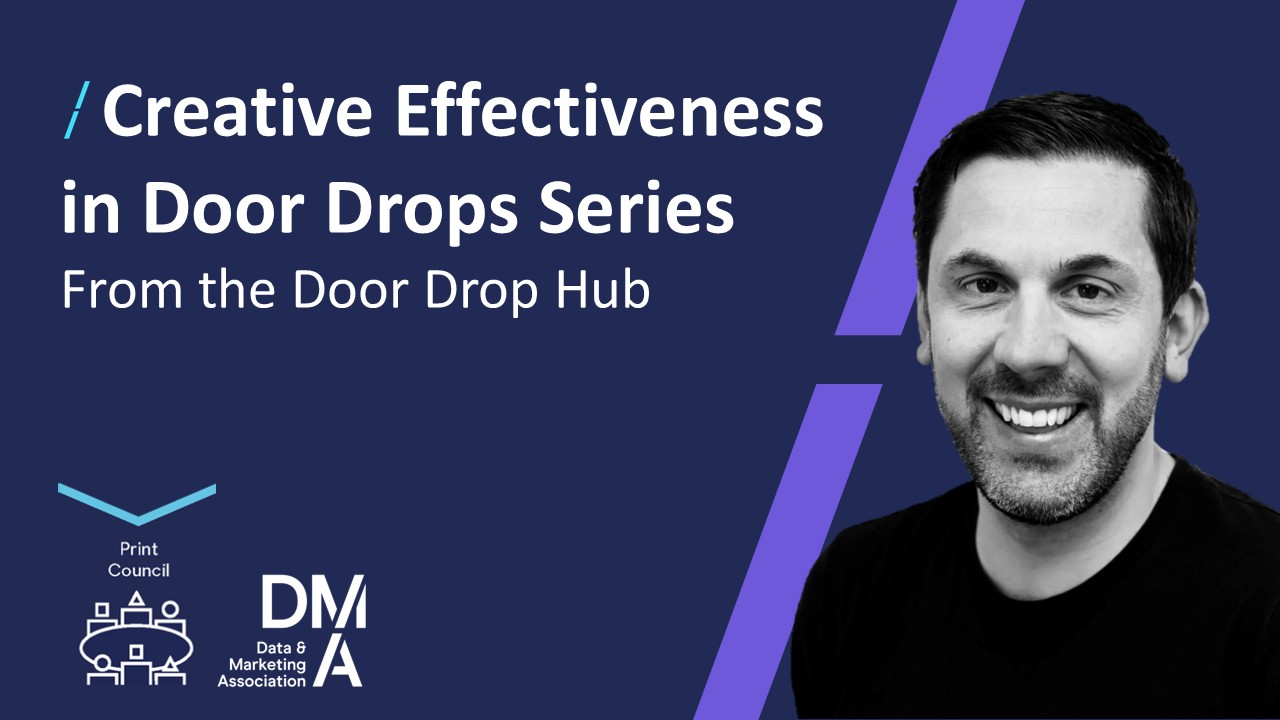How to market effectively and sustainably
25 Apr 2024

When thinking about sustainable marketing, often we think about the channels that we use, or the materials that we use in a physical sense. We can overlook things like the audience targeting, data cleanse and optimisation, which have a big impact on minimising wastage. Not only does a highly targeted campaign ensure you reach the right people and minimise wastage, it also means you make the campaign more efficient from a cost and performance perspective.
Audience Scoping
Before beginning to work with any client, it’s best practise to really understand their audience and discover their behaviours, interests, key demographics and which media channels they consumer and interact with.
You can do this by analysing their customer data and building a profile: this can be done via any large-scale data provider and will provide you with a report that highlights key demographics, regional hotspots, interests and other interesting information. Once the profile is built you can build this audience out in a platform called TGI (Target Group Index) to delve deeper into who they are and what channels they consume.
Once you have an idea on media channel selection and audience you can begin to build out a robust proposal to target this audience specifically via channels we know they consume a lot. Bringing it back to sustainability, this means we can filter out any unnecessary activity which has a carbon footprint, but won’t be effective in reaching your audience.
Print Channel Targeting
For print channels like door drop and cold direct mail, you can get super targeted with which households you mail by understanding more about the audience and overlaying specific demographics and other variables into your data selection. Both channels enable us to build models and find lookalikes of existing audiences where customer data is available so that we can reach consumers who are most likely to respond. In addition, you can overlay additional variables or regional selections to enhance further, delving into postcodes within specific counties or cities to really drill down into specific areas where new customers are likely to be.
For channels like inserts and press, we’re not able to build models or be as selective with our targeting, but we can understand the interests and demographics of the audience and align our activity recommendations with these audiences to minimise wastage. For press titles, usually we can target specific regions too, which can add an additional layer to the targeting that is determined by what we know about existing audiences and how they index in certain regions, and other activity results can feed into this for areas where response is typically high.
Data Cleanse
For channels like partially addressed mail and direct mail, there is another element of the process that can enhance our precision targeting: data cleanse.
From a compliance perspective, any direct mailing must be suppressed against the MPS (Mail Preference Service), but it’s also best practise to suppress against PAF fail, deceased, goneaway, obscenity and complainer files to further enhance your cleanse and remove any consumers that either might not want to be contacted, or cannot be contacted with the current address we have for them. Not only is this crucial to mail consumers in a compliant way, but it also feeds into the sustainability side of things given that if we mailed those matching into these files, it’s almost certain the mail item would be discarded without being read.
In addition, these channels can be very clever in minimising wastage that might reach existing customers, as you should also dedupe your mailing file against your existing customer database to ensure you only reach potential new customers. For DM this can be done at individual level and for PAM, at household level.
Printing Sustainably
The final puzzle piece for printed campaigns that most people are aware of and consider directly related to sustainable marketing is ensuring than materials and production process is as sustainable as possible: FSC paper stock, carbon balancing paper, vegetable inks. Consideration of smaller packs is another big one that can sometimes be overlooked: again, one that due to less paper usage also means lower print costs.
Envelope packs with postal BRE replies are typical formats for DM and PAM campaigns, in particular for the likes of charities that will include a donation form, or finance brands that will include an application form. The exploration of smaller packs to combat high costs and drive efficiencies is on the rise: A5, 6-8 page leaflet packs with detachable BRE’s are becoming more popular and are proving to provide strong response rates. Making small changes to formats can have a massive impact on pack sustainability while maintaining campaign performance and are worth considering.
Results and Optimisation
To continue on the path of sustainable marketing it is a continuous cycle of testing, learning and optimisation. Once we have results from a campaign, we need to optimise who and where we target based on the best response, not only does this provide an effective marketing strategy from a performance and efficiency perspective, but it also means your marketing will be more sustainable as you begin to hone in more on your ideal and most responsive audiences.
Summary
In conclusion, a combination of the following elements to planning and fulfilling a campaign will ensure you are being mindful of sustainable marketing throughout the process:
- Scoping the audience
- Selecting the right media channel/s
- Targeting the right audience
- Using precision targeting to delve deeper than general lookalikes
- Cleansing data responsibly and stringently
- Printing sustainably and exploring smaller formats
- Optimising targeting for each campaign





Please login to comment.
Comments